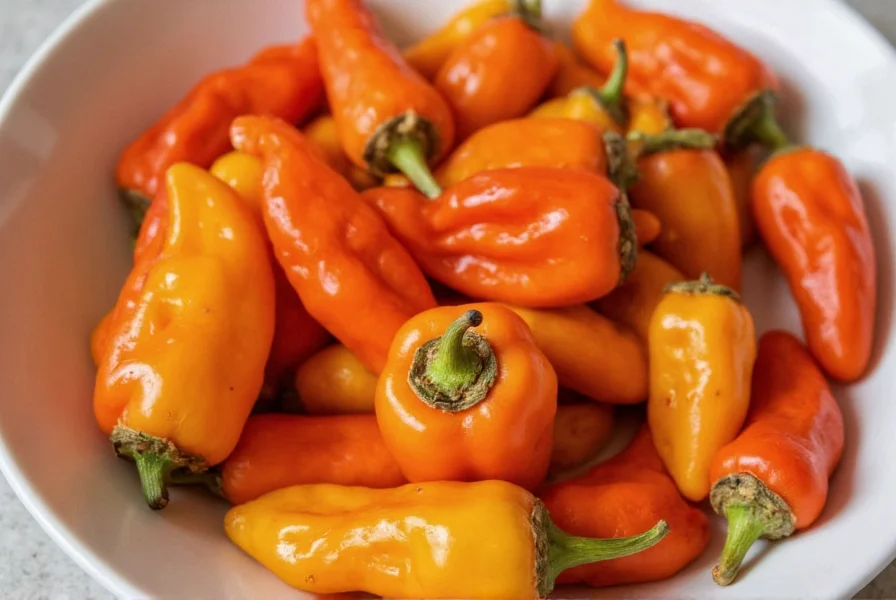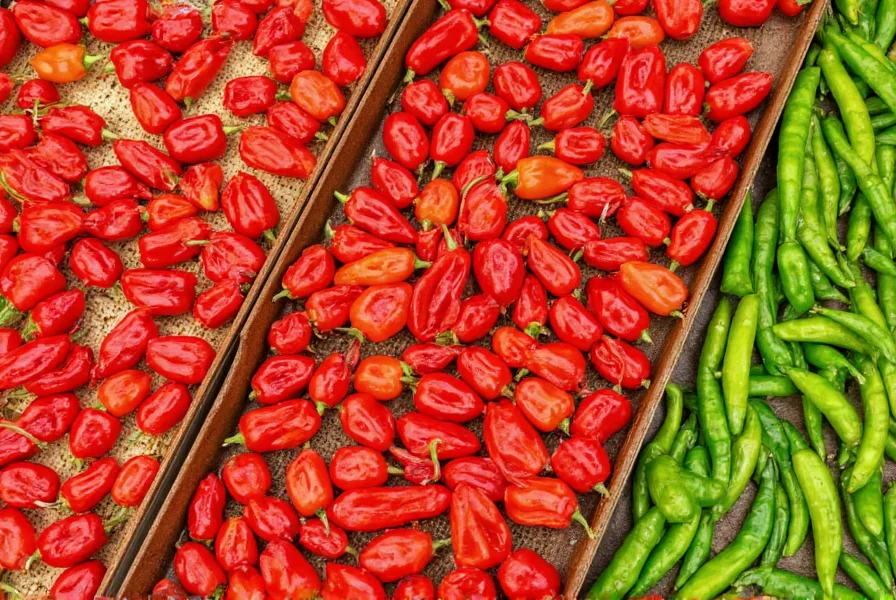Why Fresh Peppers Demand Better Preservation
Home gardeners lose 30-40% of chili harvests to spoilage within weeks (UC ANR). Fresh peppers mold rapidly in humidity above 60%, wasting seasonal crops. Commercial freezing alters texture, while canning leaches capsaicin—the compound giving heat. This isn't just waste; it's losing months of cultivation effort for sauces, salsas, or spice blends.
Dehydration Science: Why It Beats Alternatives
Low-temperature dehydration (50-65°C) stabilizes capsaicin while limiting vitamin C degradation to 10-15%—far better than canning's 50% loss (USDA FDC). Unlike sun drying, which risks inconsistent results from weather fluctuations, dehydrators maintain precise airflow. Excalibur's airflow studies confirm even drying prevents case hardening, where outer layers seal moisture inside.

Step-by-Step Dehydration Protocol
- Prep: Wash peppers; slice lengthwise to expose seeds (increases surface area). Wear gloves—capsaicin irritates skin.
- Arrange: Place cut-side down on trays with 1cm spacing. Never stack—blocks airflow.
- Set Parameters: 55°C for 24 hours (jalapeños) or 60°C for 36 hours (habaneros). Higher temps scorch delicate skins.
- Test Dryness: Peppers should snap, not bend. Under-dried batches risk mold in storage.
| Drying Method | Time Required | Vitamin C Retention | Reliability Risk |
|---|---|---|---|
| Food Dehydrator | 24-36 hours | 85-90% | Low (controlled environment) |
| Sun Drying | 3-7 days | 50-60% | High (rain, insects, inconsistent heat) |
| Oven Drying | 8-12 hours | 70-75% | Moderate (energy waste, uneven heat) |
When to Use (and Avoid) Your Dehydrator
Use when:
- Harvesting >5 lbs of peppers (economical for bulk processing)
- Humidity is below 60% (prevents rehydration during drying)
- Creating spice blends—dried peppers grind finer than frozen
Avoid when:
- Peppers show mold (dehydrating spreads spores)
- Ambient humidity exceeds 70% (add silica gel packs to trays)
- Processing wax-coated peppers (e.g., some bell varieties)—peel first
3 Costly Mistakes Home Users Make
Mistake 1: Setting temperatures above 65°C to "speed up" drying. This degrades volatile oils, muting flavor complexity (Excalibur Dehydrator data). Solution: Stick to 55-60°C—patience preserves heat.
Mistake 2: Storing dried peppers in zip-top bags. Moisture seeps through plastic, causing clumping within weeks. Solution: Use glass jars with oxygen absorbers; extends shelf life to 12 months (AllRecipes).
Mistake 3: Dehydrating whole peppers. Seeds trap moisture, requiring 50% longer drying and risking internal spoilage. Solution: Always slice lengthwise.

Quality Checklist for Dehydrator Selection
Not all units handle peppers equally. Prioritize these features:
- Horizontal airflow (vs. vertical): Prevents lightweight pepper pieces from blowing around (Excalibur design principle)
- Adjustable thermostat ±5°C precision: Critical for delicate varieties like serranos
- Tray spacing ≥2.5cm: Ensures unobstructed air circulation per UC ANR guidelines
Avoid units with only on/off switches—temperature control is non-negotiable for consistent results.
Everything You Need to Know
No. Capsaicin remains stable during low-temperature dehydration (50-65°C). USDA FDC data confirms minimal degradation, preserving heat levels. High-heat methods like frying reduce potency by 25-40%.
Stored in airtight glass containers with oxygen absorbers, dried peppers retain full potency for 12 months (AllRecipes). Beyond this, capsaicin degrades slowly—flavor remains safe but milder. Refrigeration isn't needed and risks condensation.
Ovens lack precise low-temperature control. Most can't maintain 55°C steadily, risking scorching or uneven drying. Energy use is 3x higher than dehydrators (UC ANR). If unavoidable, set to 'warm' (50°C) with door ajar—but expect 20% higher nutrient loss.
60°C for 30-36 hours. Habaneros' thin walls dry faster than thicker jalapeños but require slightly higher heat to prevent case hardening. Excalibur Dehydrator tests show temperatures below 58°C extend drying time without improving nutrient retention.
Bitterness comes from overheating. Temperatures above 65°C degrade volatile compounds. Always dry below 65°C and avoid stacking peppers. If bitterness occurs, rehydrate briefly in vinegar to balance flavors for sauces.











 浙公网安备
33010002000092号
浙公网安备
33010002000092号 浙B2-20120091-4
浙B2-20120091-4